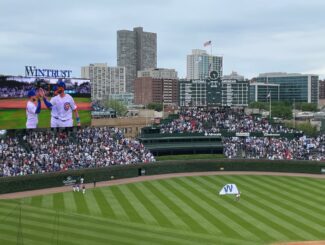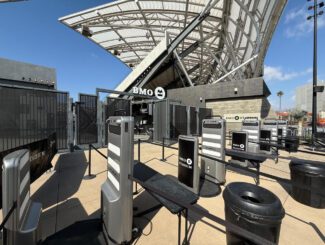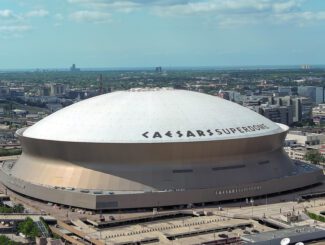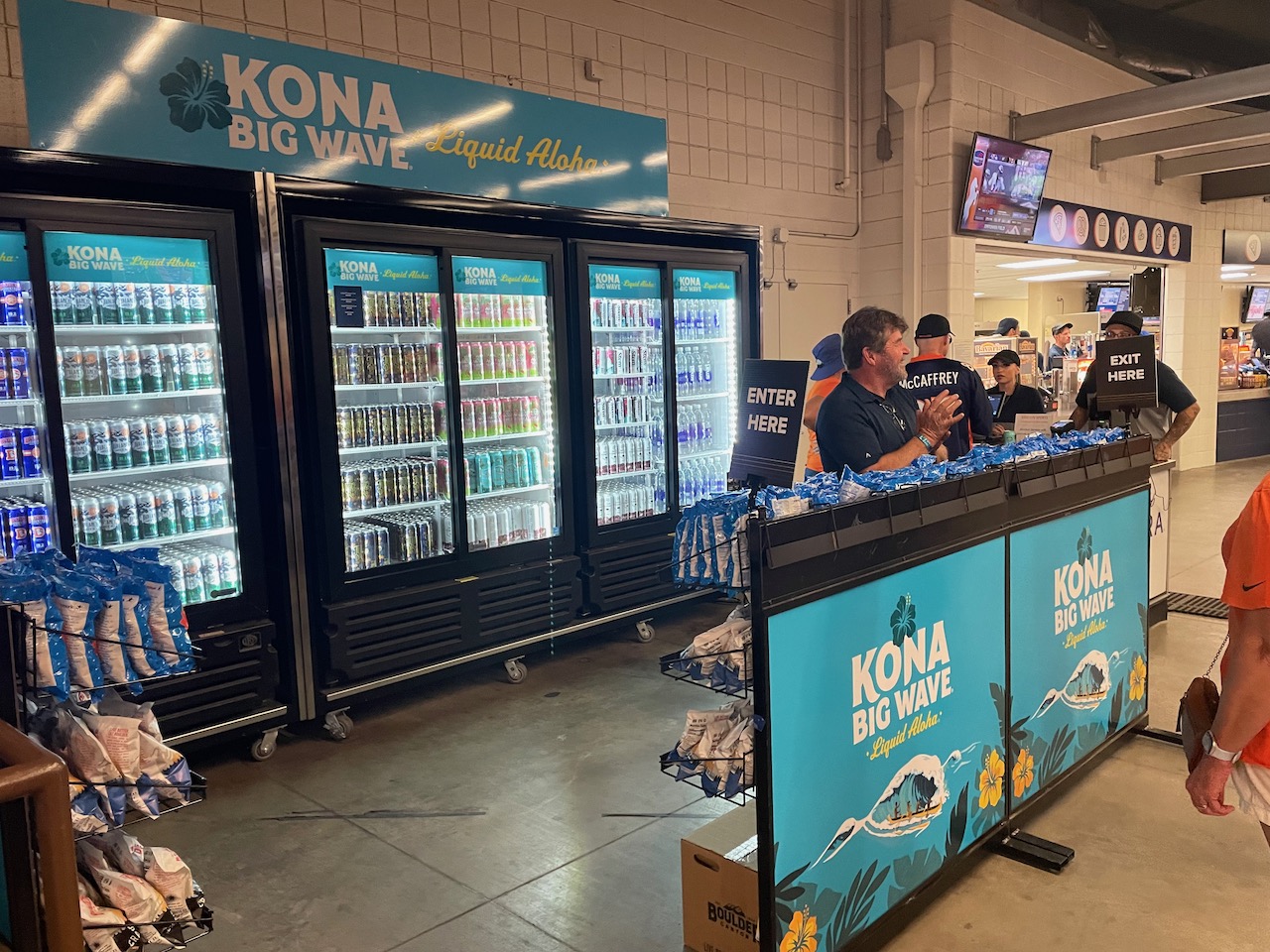
The one thing that’s often not mentioned when discussing stadium concession technology is that the physical layout and functionality of the stands themselves can sometimes do as much to improve fan and business experiences than any technology.
Starting just before the pandemic hit, Empower Field at Mile High and other venues began experimenting with concession stands that looked much different than the traditional “belly up” design where cashiers stood on one side of the counter and interacted with customers in lines perpendicular to the counter.
At Empower Field at Mile High the Aramark “Drink Mkt” stands were among the first different ones to launch, basically just spaces where customers would walk by tall glass-door coolers, select what they wanted and check out. At some of the stands, traffic came in one side and exited on the other, keeping congestion to a minimum. By building more stands with narrow menus of either drinks or simple food selections, venues were starting to balance out the lines that had forced people to the general-purpose stands even if they only wanted a beer or a bottle of water.
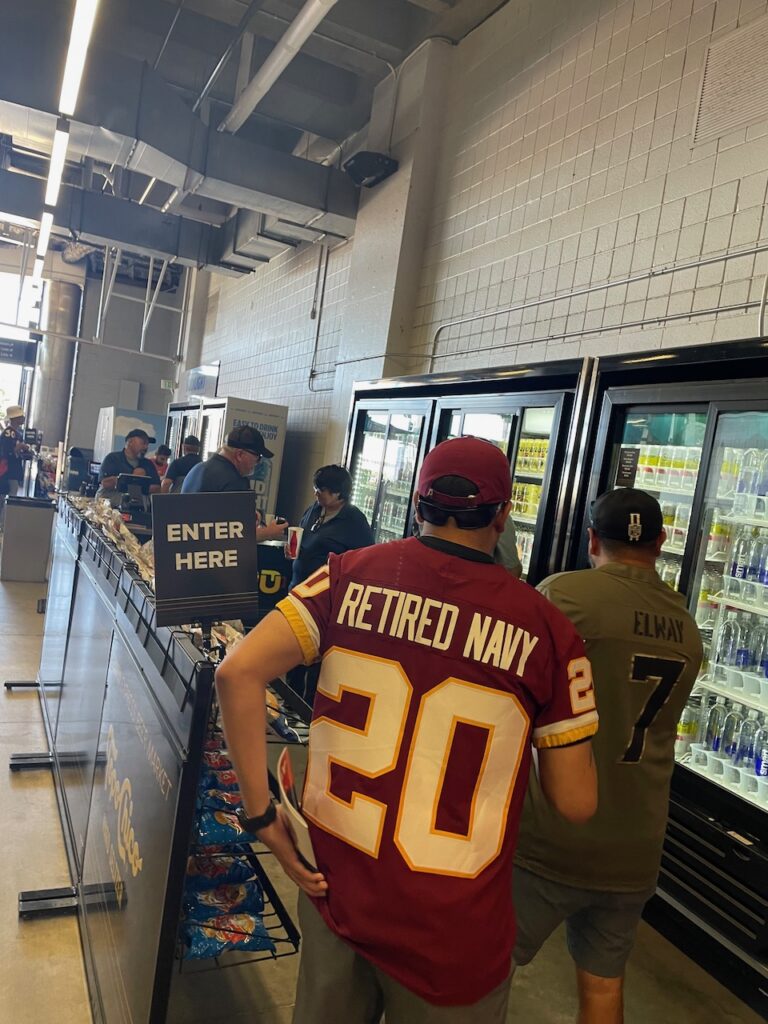
Walk Thru Bru emerges as a standard
“Walk Thru Bru,” an Aramark model that placed such a stand usually on concourse walkways, was another early design that proved effective. For Aramark a Walk Thru Bru stand is a simple deployment that typically involves a closed-in, single-file line space where fans walk along glass-door coolers, select their items, and proceed in the line’s one-way direction to the checkout stands. While Mashgin devices were the original checkout choice for the stands, according to Aramark it has found through testing that it’s mainly the slim-line design that speeds up transactions, and not necessarily the checkout technology.
When Aramark started deploying the Walk Thru Bru stands, “we loved pairing them with Mashgin and Zippin,” said Scott McDade, Aramark vice president of insights. “But what we found is that the model itself has a lot of efficiency – people can shop for themselves, making their decisions before the register.”
According to Aramark, that efficiency was the main driving factor behind the concessionaire’s decision this NFL season to remove “portable” beverage stands – usually a square stand where cashiers sold either draft beer from kegs or cans stored in ice bins – from many of its major NFL client stadiums and replace them with the “Walk Thru Bru” concept.
According to McDade, the switch has already started paying off. At the Chicago Bears’ home opener this season against Green Bay, McDade said a stand area where a Walk Thru Bru replaced a portable stand saw 80 percent more transactions than at the home opener from the year before. At Empower Field at Mile High, Aramark said Walk Thru Bru conversions “have seen increased participation of 55 percent during peak periods,” which allows those locations to take on more volume and reduce the size of lines at other stands.
Replacing automatic drink machines
Alicia Woznicki, vice president of design and development at Aramark, said the Walk Thru Bru design offers “so many benefits from a client perspective.” In addition to the increased sales, the stands are easily branded with cooler signs or printed designs on the materials used to create the lanes. At Empower Field at Mile High, we saw several Walk Thru Bru stands with Bud Light branding, and another with Topo Chico as the signage sponsor.
By lining up the stands parallel to concourse flow, Woznicki said they can help keep concourses from jamming up during peak purchasing times. And, like the other Zippin- and Mashgin-powered stands, they can reduce line pressure on the stands where fans may be buying specialty cooked items or mixed drinks.
Woznicki said the bet on Walk Thru Bru led Aramark to eliminate the “TendedBar” automated drink stands it had previously deployed at Empower Field at Mile High. The TendedBar stands, which are basically large trailers with multiple taps where customers select custom-mixed drinks from a screen menu, are gaining acceptance elsewhere, including recent deployments at Darrell K Royal Texas Memorial Stadium at the University of Texas and at Texas A&M’s Kyle Field.
“We just saw more traction with the Walk Thru Bru stands,” Woznicki said. “What we hope is that [having more of them] will make lines faster at bars where people want mixed drinks.”
Next: Column: When you deploy technology, don’t forget the people
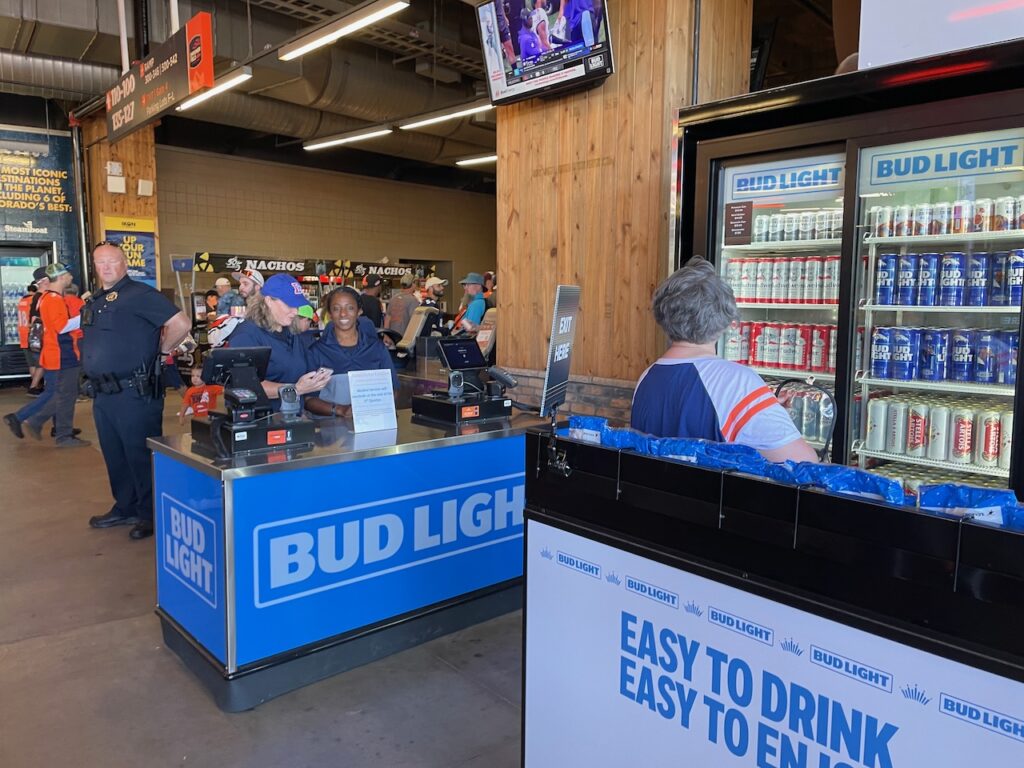
Editor’s note: This post is part 4 of our four-post report on the concessions technology in use at Denver’s Empower Field at Mile High. To go to the start of the report, click here. You can also download a PDF of the full report, with more photos.



